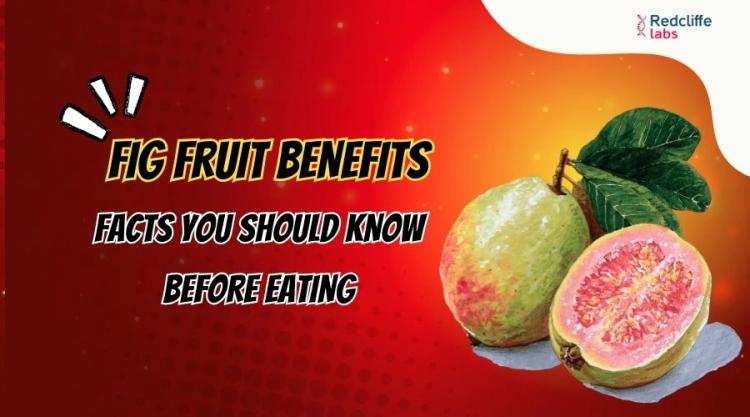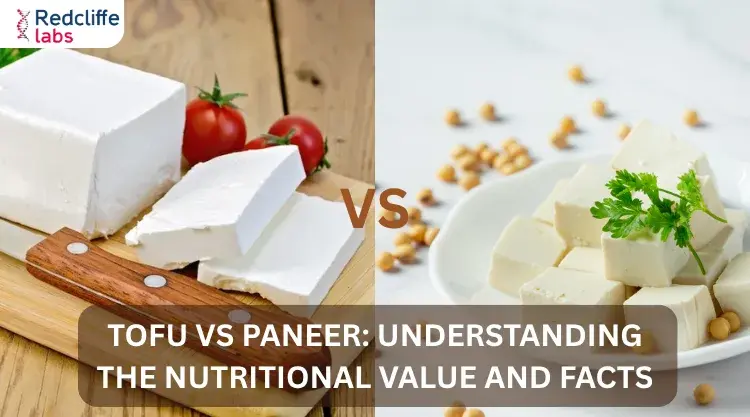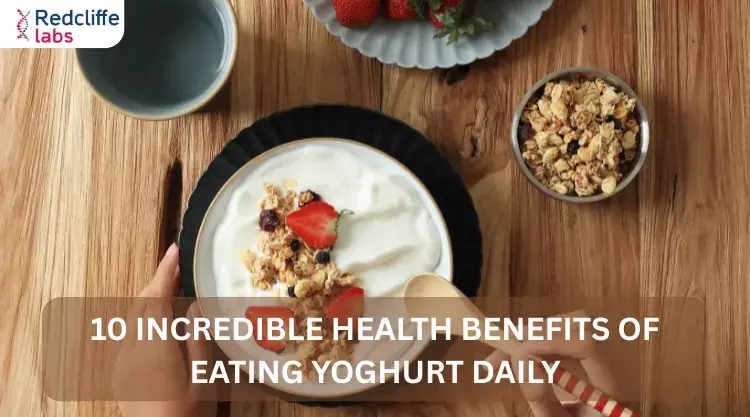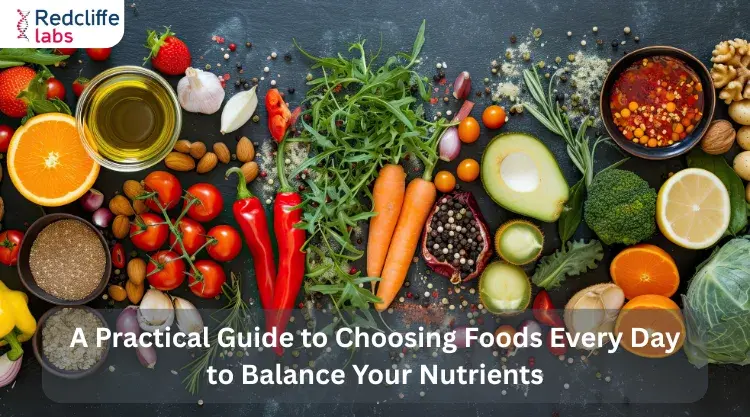Pregnancy Diet Chart: Nutrition Tips for Every Trimester

Medically Reviewed By
Dr. Geetanjali Gupta
Written By Muskan Taneja
on Aug 29, 2024
Last Edit Made By Muskan Taneja
on Jul 19, 2025

Every year, around 30 million women experience pregnancy, and 27 million experience live births. In a survey by the National Family Health Survey (NFHS), around 7% of women experience miscarriage in India. However, a healthy Indian diet may prevent miscarriage. A pregnancy diet chart provides nutrients, vitamins, and minerals. Research has found that fruits, vegetables, whole-grain products, eggs, and dairy products may reduce the risk of complications.
A healthy Pregnancy Diet Chart provides nutrients and enough calories for the baby's development. So, let’s begin with understanding the benefits and diet chart for pregnancy.
How is a Diet Chart For Pregnancy Beneficial?
In daily life, people consume anything or everything. However, following a balanced diet chart during pregnancy provides nutrients and prevents any mishap. Your gynecologist might suggest following a diet. A pregnancy diet chart includes lean protein, fruits, vegetables, healthy fats, whole grains, and dairy products. Nevertheless, avoid the consumption of substances such as alcohol, caffeine, red meat, or fatty fish. It can increase cholesterol and complications during pregnancy. Here are five benefits of a diet chart for pregnancy.
- It provides essential nutrients to the mother’s body, which are important for the baby’s growth.
- Diet improves the mother’s overall health (mental and physical).
- The diet reduces the chances of complications.
- Increase chances of a baby's having a healthy birth weight.
- Limit the chances of gestational diabetes and preeclampsia.
These are the benefits of a healthy pregnancy diet chart. Now, let’s understand a complete breakdown of the pregnancy food chart.
A Healthy Indian Pregnancy Diet Chart
| Week Day | Breakfast | Lunch | Evening Snack | Dinner |
| Day 1 | 1 cup upma+ 2 medium-sized parathas | ⅕ cup khichdi with 1 bowl curd + 1 piece chicken or paneer | 10-12 pieces of dry fruits (almonds, cashew nuts, walnuts) | ⅕ bowl of rice with lentils |
| Day 2 | 1 cup oatmeals + 2 boiled eggs | ⅕ cup boiled rice + 1 bowl masoor dal + 1 piece chicken or paneer | 1 medium-size avocado | 1 cup vegetable curry with 2 chapati with 1 tsp ghee spread over it. |
| Day 3 | 1 cup poha + 1 moong dal chilla | ⅕ cup pulao or chicken biryani + ½ cup cucumber raita | 1 plate of vegetable salad. | 1 cup paneer curry with 2 chapatis with 1 small tsp of ghee spread over it. |
| Day 4 | 3 wheat dosa with green chutney | ⅕ cup boiled jeera rice + ½ cup cucumber raita + 1 piece paneer or chicken | 1 plate of fruit salad. | 1 cup of spinach and paneer curry with ⅕ bowl of rice |
| Day 5 | 1 cup oatmeal + 2 boiled eggs | ⅕ cup pulao or chicken biryani + ½ cup cucumber raita | 10-12 pieces of dry fruits. | 1 cup of baigan bharta with 2 chapatis with 1 tsp of ghee spread over it. |
| Day 6 | 1 cup veggie sevai + 2 medium-sized parathas | ⅕ cup boiled jeera rice + 1 cup broccoli sabzi with 1 cup curd or cucumber raita | 1 plate of sweet potato salad with 1 cup of green tea. | 1 cup dal tadka with ⅕ cup jeera rice. |
| Day 7 | 2 moong dal chillas with 2 tsp green chutney | ⅕ cup vegetable pulao with 1 cup pineapple raita | 1 plate full of fruit salad. | Stir-fry tofu with ⅕ cup brown rice. |
Also, read: https://redcliffelabs.com/myhealth/health/benefits-of-walnuts-during-pregnancy/
Pregnancy Diet Plan For Each Trimester
Each trimester requires a specific food intake. Food during this trimester affects the overall fetus’s growth and development. The one—to three-month pregnancy diet chart differs from the second and third trimesters. The initial months are crucial. Here, we have provided a pregnancy diet chart month by month.
First Trimester (1-3 months)
In the first trimester, folic acid is vital for the fetus’s well-being, growth, and neurological development. In your 1 to 3 month pregnancy diet chart, add food such as eggs, nuts, broccoli, legumes, and citrus fruits to fulfill the folate or folic acid. Here are the foods you can add to the intake of nutrients.
- Fruits- Berries, bananas, and citrus fruits.
- Vegetables- Broccoli, carrots, green leafy vegetables.
- Dairy products- Milk & greek yogurt.
- Fluids- Water, herbal teas
- Whole Grains- Oatmeal, brown rice, whole grain bread
- Proteins- Fish, legumes, and lean meats
- Healthy Fats- Avocado, olive oils, and nuts
Second Trimester (4-6 months)
The fetus starts developing the skeletal system in the second trimester. Calcium is of the utmost importance during this stage, and dairy products must be added. Nonetheless, nutrients such as omega-3 fatty acids, vitamin D, and magnesium are also essential.
- Proteins- Fish, legumes, and lean meats
- Whole grains- Whole-grain breads, oatmeals
- Fruits- Seasonal or your favorite fruit.
- Dairy Foods- Milk, yogurt, calcium-rich foods
- Healthy fats- Nuts, olive oils, and avocado
- Fluids- Water, herbal teas
- Vegetables- Green-leafy vegetables
Third Trimester (7-9 months)
The third trimester is crucial. This period is when the fetus grows completely. Nutrients such as vitamins K, C, and B1 are essential. Sweet potato is a great source of thiamine. However, vitamin K is essential during the third trimester to avoid post-birth complications.
- Proteins- Fish, omega-3, legumes, and lean meats
- Vegetables- Spinach, green beans, broccoli, and green leafy vegetables.
- Healthy fats- Avocado, olive oil, and nuts
- Fruits- Kiwi, raspberries, tomato, papaya, strawberries, and melon
- Dairy foods- Milk, greek yogurt, tofu, and calcium-rich foods.
- Fluids- Water
- Whole grains- Whole wheat bread, oats, brown rice.
10 Foods To Eat During Pregnancy
Following a pregnancy diet chart is enough for the growth and development of the baby. It prevents complications and mis-happenings. However, there are certain foods and beverages to eat during pregnancy. These are:
- Green leafy vegetables—such as spinach, broccoli, sprouts, and peas—contain antioxidant properties and vitamins A, B6, C, and K. Together, they support healthy bones, improve hemoglobin, and prevent skin infections.
- Dairy Products- Milk, paneer, and curd are rich in nutrients, vitamins, and calcium that support a baby’s development. They also have probiotics and anti-oxidant properties.
- Lean Meat and Proteins- Lean meat is a known source of protein. Nutritionists recommend consuming a moderate amount of lean meat. Nonetheless, vegetarians can opt for chickpeas, lentils, or tofu.
- Dry Fruits- Dry fruits contain zinc, potassium, calcium, and fiber. They prevent the chances of constipation during pregnancy.
- Berries—Berries are best for maintaining hydration levels. Additionally, they are rich in carbohydrates, vitamin C, fibre, and nutrients.
- Fish Liver Oil and Salmon- Salmon and fish liver oil provide omega-3 fatty acids, nutrients, and vitamins for overall baby development. Fish liver oil reduces the chances of premature delivery.
- Legumes and Sweet Potatoes—Legumes are necessary during pregnancy as they provide protein, calcium, folate, and iron to the body. Sweet potatoes provide essential vitamins for healthy growth.
- Eggs- Eggs are great for protein. They provide vitamins, minerals, and amino acids for growth.
- Water-Water keeps a mother’s body hydrated. It also aids in digestion and maintains amniotic fluids around the baby. Drink at least 8 glasses of water every day.
- Avocados—Avocados provide vitamin C, magnesium, folate, and potassium. They might not appear, but they may help in overall baby growth.
10 Foods To Avoid During Pregnancy
Not every food is good during pregnancy. Here are 10 foods and beverages you should avoid during pregnancy.
- Organ meat
- High mercury fish
- Raw or processed meat
- Caffeine
- Unwashed or contaminated foods
- Alcohol
- Junk foods
- Raw or unpasteurized milk and cheese
- Fortified fruit juice
- Raw eggs
Key Takeaways
A well-balanced pregnancy diet chart ensures a healthy pregnancy. Nutrients in the pregnancy diet chart provide essential growth. Remember to always listen to and monitor your body. Make sure you add vitamins, supplements, and medicines. Moreover, consult a nutritionist and gynecologist to understand your food reactions and allergies better.



